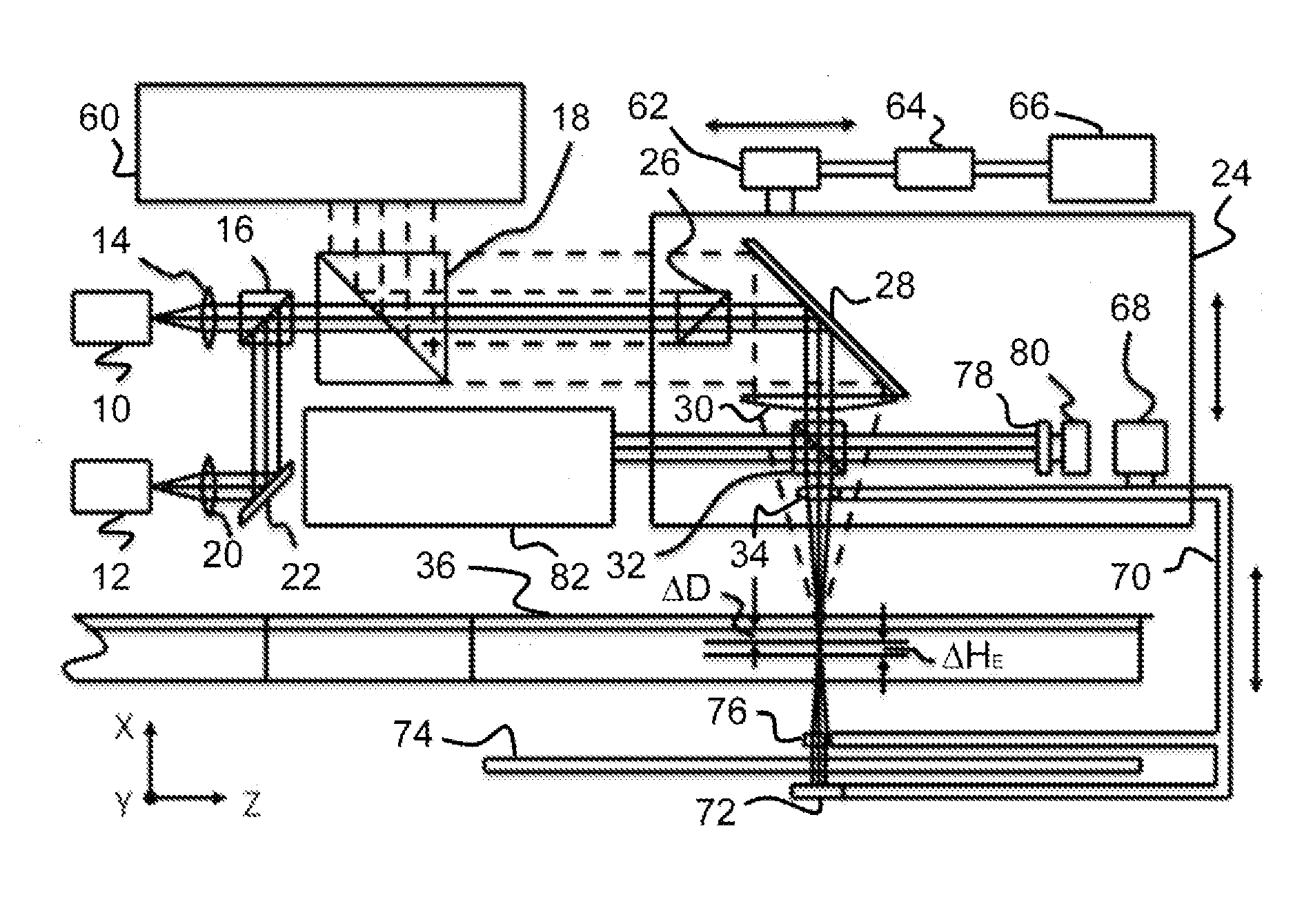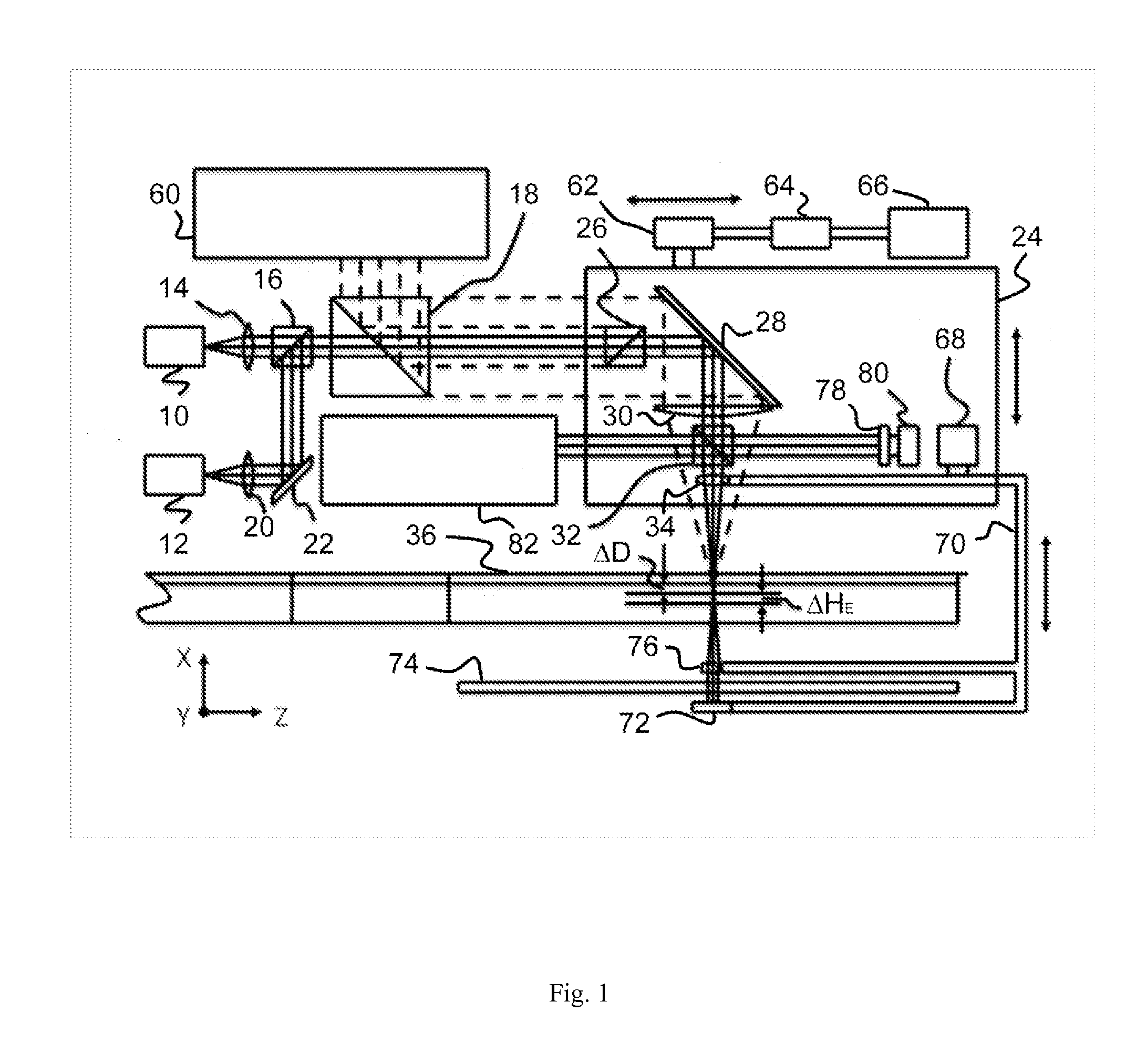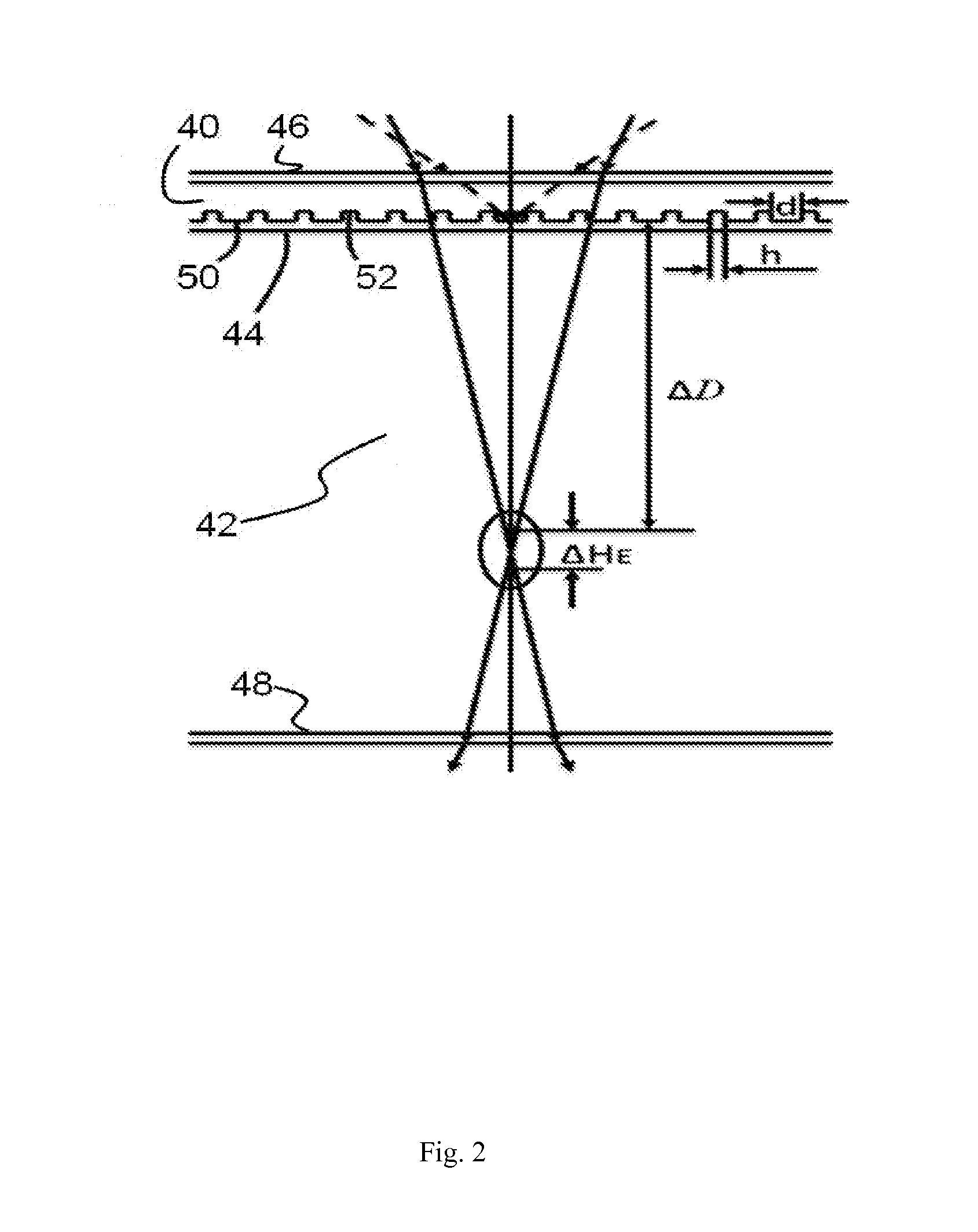Six-dimensional Optical Multilayer Storage Using Two-photon Absorption Writing, Erasing and Optical Coherence Tomography Reading
a technology of optical multilayer storage and two-photon absorption, applied in information storage, recording/reproducing/erasing using optical interference patterns, instruments, etc., can solve the problems of limiting the available layer number, reducing the quality of holographic recording, and reducing the data transfer speed to ultrahigh capacity. , to achieve the effect of reducing interlayer crosstalk noise, reducing the interlayer crosstalk noise, and improving the shortag
- Summary
- Abstract
- Description
- Claims
- Application Information
AI Technical Summary
Benefits of technology
Problems solved by technology
Method used
Image
Examples
Embodiment Construction
[0016]The system is shown in FIG. 1, which can be regarded as a standard disk drive with the addition of a synchronized moving reflective unit under the disk, and using laser and superluminescent diode arrays as write / erase and read light sources and photosensor arrays as signal detector.
[0017]The write / erase light source 10 contains M fixed frequency distributed-feedback (FF-DFB) semiconductor laser arrays, and so forms a wavelength-selectable light source. The structures of M laser arrays are same. In each laser array, there are N FF-DFB lasers. The number N is normally from 30 to 70. Each of these FF-DFB lasers is manufactured with a slight wavelength shift δλW of 4 nm to 13 nm. Thus, each laser array has a wavelength distribution of λW1, λW2, λW3, . . . , and λWN within the range ΔλW, and the wavelength distributions of M laser arrays are same. Normally, ΔλW is in visible and near infrared ranges, and may extend to the ultraviolet range. In each laser array, the laser beams ente...
PUM
| Property | Measurement | Unit |
|---|---|---|
| thick | aaaaa | aaaaa |
| wavelength shift | aaaaa | aaaaa |
| wavelength range | aaaaa | aaaaa |
Abstract
Description
Claims
Application Information
 Login to View More
Login to View More - R&D
- Intellectual Property
- Life Sciences
- Materials
- Tech Scout
- Unparalleled Data Quality
- Higher Quality Content
- 60% Fewer Hallucinations
Browse by: Latest US Patents, China's latest patents, Technical Efficacy Thesaurus, Application Domain, Technology Topic, Popular Technical Reports.
© 2025 PatSnap. All rights reserved.Legal|Privacy policy|Modern Slavery Act Transparency Statement|Sitemap|About US| Contact US: help@patsnap.com



